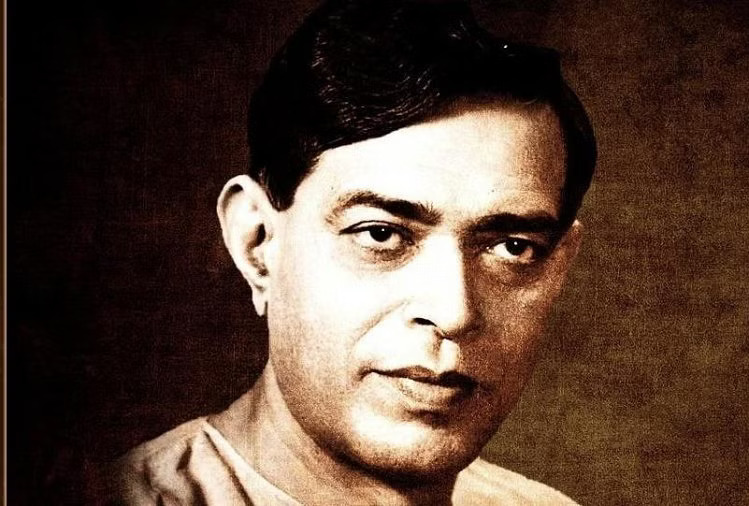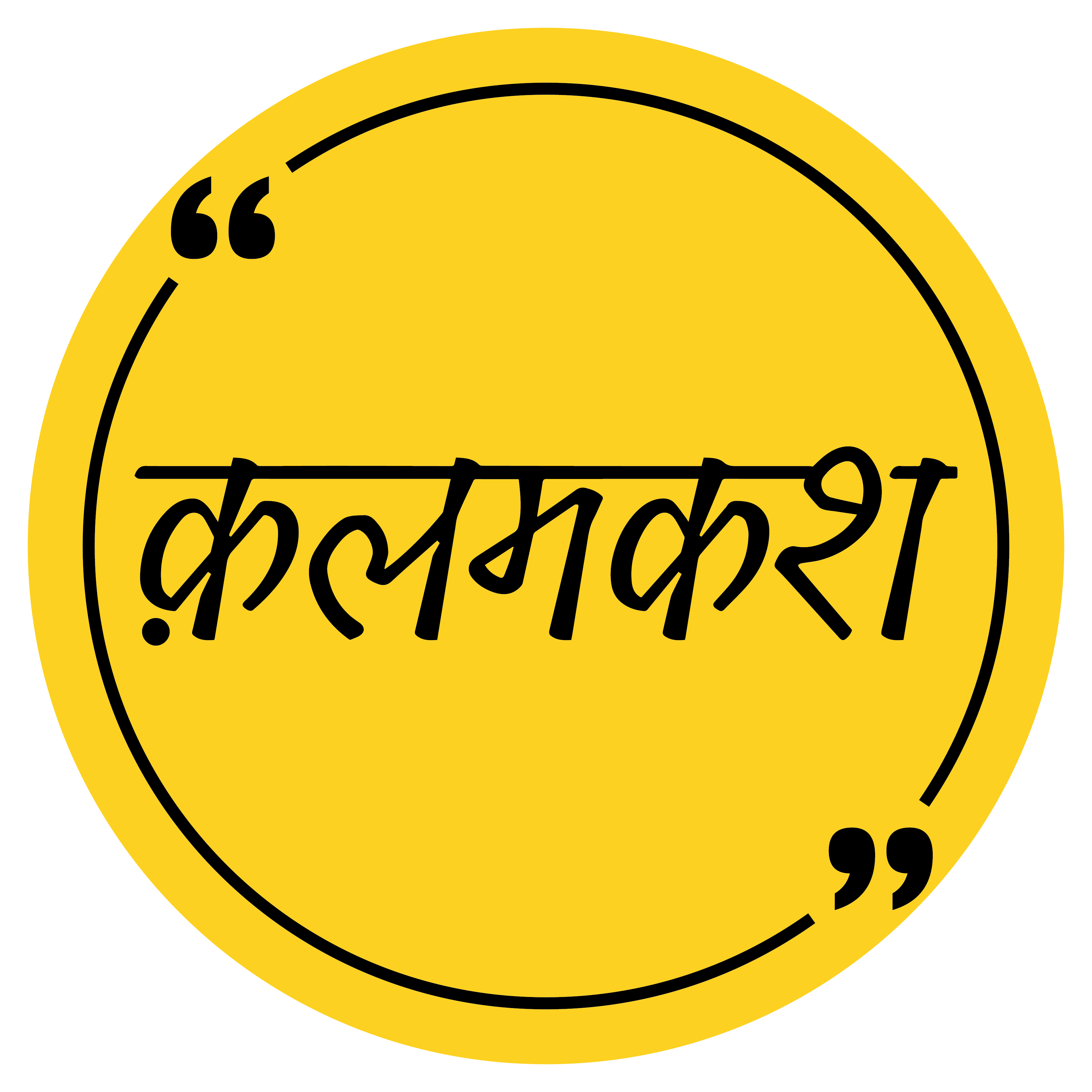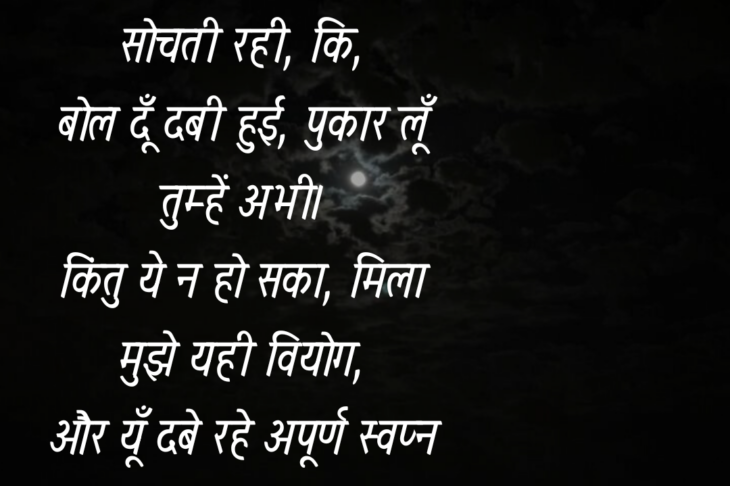
‘Dinkar’ A legend in Indian literacy
INTRODUCTION
Parichay
” सुनुँ क्या सिंधु, मैं गर्जन तुम्हारा
स्वयं युग-धर्म की हुँकार हूँ मैं
कठिन निर्घोष हूँ भीषण अशनि का
प्रलय-गांडीव की टंकार हूँ मैं “
" Should I listen you roar Sindhu,
I myself am the voice of the age-religion
I am difficult to announce the terrible death
I am the tinkerer of Pralay-Gandiva "
Ramdhari Singh popularly known by his pen name ‘Dinkar‘ was an Indian Poet, Essayist, Freedom Fighter, Patriot, Academic and a former member of Rajya Sabha. He was born in the Simariya village of Bihar on September 24, 1908. He completed his B.A in history and political science from Patna University. He practised Hindi, Sanskrit, English, Urdu and Bangla very well after completing his B.A he became an Academic. From 1934 to 1947 he worked as deputy director in the sub-registrar and department of public relations in the Bihar government. From 1950 to 1952 he worked as head of department at Langat Singh University in Muzaffarpur. From 1963 to 1965 he worked as vice chancellor at Bhagalpur University, and after that, he became a Hindi consultant for the Indian government.
STRUGGLES
As a student, Dinkar had to fight with daily issues related to his Family, School and poverty. When he was in Mokama High School, he wasn’t able to stay until the school closed at 4 p.m. So, he had to leave the school after lunch, due to which he couldn’t attend all the periods. And because of his poverty, he couldn’t afford a hostel.
After that, when Dinkar was in his teenage, the Indian independence struggles had already begun under the leadership of Mahatma Gandhi. In 1929, after enrollment, he entered Patna College for his intermediate and the movement became more aggressive. In 1928, demonstrations against the Simon Commission were held in Patna under the leadership of Maghfoor Ahmad Ajazi in which Dinkar also signed the oath Papers. After that, in the protest against the Simon Commission, the British Police mercilessly Lathi charged the Lion of Punjab Lala Lajpat Rai. By which the Poetic mind of Dinkar became Extremely Great.
Dinkar’s first poem was featured in a local newspaper named Chhatra Sahodar. After that, he wrote 10 poems which were later published as ‘Vijaya Sandesh’ on the satyagraha in Bardoli, Gujarat under the leadership of Iron Man of India.
On 14 September 1928, his poem on the sacrifice of Jatin Das was published. About this time two poetic works named ‘Birbala’ and ‘Meghnad-vadh’ were written by him but not traceable yet. He composed a poem ‘Pran-Bhang’ in 1930 which was mentioned by Ramchandra Shukla. By now his poems have become frequent features of magazines Desh and Pratibha.
In 1935 Dinkar’s first poetic collection ‘Renuka’ was published on which Banarasi Das Chaturvedi wrote that Hindi speaking peoples would love and celebrate the publication of Renuka. Later he gave a copy of the book to Mahatma Gandhi in his Sevagram.
ACHIEVEMENTS
What to say about his achievements. He was honoured by the title of ‘Rashtra Kavi’ which he truly deserved. In 1959 he was awarded Padma Bhushan and Sahitya Akademi Puruskar for his work ‘Sanskriti ke chaar adhyay’. He also received awards from Kashi Nagri Pracharini Sabha, UP Government and an award for his epic poem, which I love the most ‘Kurukshetra’. Excepting these he was honoured with various awards and titles like the LLD degree by Bhagalpur University, Vidyachaspati by Gurukul Mahavidhyalaya, Sahitya-Chudaman by Rajasthan Vidyapeeth and a Jnanpith award in 1972 for his great work ‘Urvashi’. He also became a nominated member of Rajya Sabha in 1952.
Even he was remembered after his death. To mark his 79th birth anniversary, the then President of India Shankar Dayal Sharma paid tribute to him on 30th September 1987. In 1999 he was one of the Hindi writers who was featured on commemorative postal stamps released by the Government of India to celebrate the linguistic harmony of India, marking the 50th anniversary since India adopted Hindi as its official language.
On his 105th birth centenary government of India released a book named ‘Ramdhari Singh ‘Dinkar’ authored by Khagendra Thakur. A statue of him was exposed at Dinkar Chowk, Patna.
In 2016 the chief minister of Bihar, Nitish Kumar, inaugurated the Rashtrakavi Ramdhari Singh Dinkar College of Engineering in his name in the district of Begusarai, Bihar.
On May 22, 2015, the golden jubilee celebrations of his notable works ‘Sanskriti ke chaar adhyay’ and ‘Parshuram ki pratiksha’ were inaugurated by Prime Minister Narendra Modi at Vigyan Bhavan, Delhi.
DEATH
In 1974, at the age of 66, Dinkar started getting sick a lot. One day he thought of Tirupati Balaji Mandir and made a decision to go to Rameshwaram. At that time one of his disciples said to him that what he would pray to god please pray for him too, for which Dinkar said ‘I can’t pray for you what I am praying’. After that, he went to Rameshwaram and started reciting poetry describing the great form of God while sitting in the holy courtyard of Tirupati.
after that, he went to the temple and prayed for his death. On the night of 24 April 1974, he suffered a heart attack and got what he wanted. The next day his dead body was flown to Patna, Bihar and cremated on the back of maa ganga.
GREAT WORKS
He wrote more than 100 poems and essays about Social issues, Freedom, Hindi granths and much more. But here I am listing 35 major works by him.
1. Rashmirathi
2. Kurukshetra
3. Urvashi
4. Sanskriti ke chaar adhyay
5. Renuka
6. Parshuram ki Pratiksha
7. Vijaya Sandesh
8. Mitti ki oar
9. Neel Kusum
10. Neem ke patte
11. Reti ke phool
12. Ujali aag
13. Kavya ki Bhumika
14. Amrit Manthan
15. Lokdev Nehru
16. Naye shubhashit
17. Shuddha kavita ki khoj
18. Hare ko hari naam
19. Sapno ka dhuan
20. Vivah Ki Museebaten : Dinkar Granthmala
21. Sanchayitan
22. Kavi aur kavita
23. Dhoop aur dhuan
24. Rashtriya bhasha aur rashtriya ekta
25. Rashmimala
26. Sahitya aur samaj
27. Adhunik bhog
28. Kavishree : Dinkar Granthmala
29. Chintan ke ayam
30. Panth, prasad aur maithilisharan
31. Shri Arvind meri drashti me
32. Hey ram
33. Rasavanti
34. Bhagna vina
35. Samanantar



Thank you so much for your kind words! I’m glad you enjoyed the post. I’ll definitely check out your blog. Keep up the great work as well!